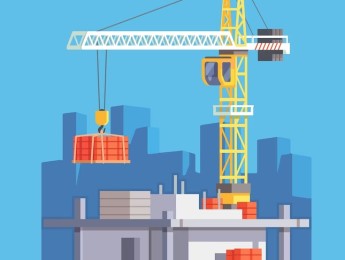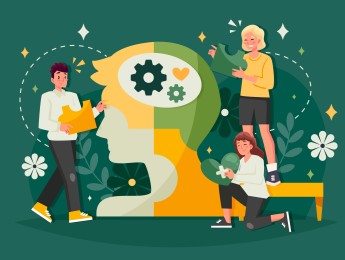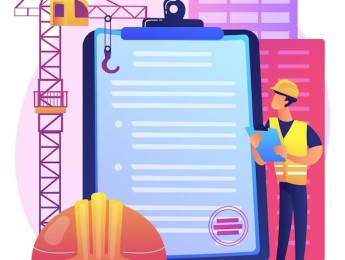Electrical engineering is a highly respected profession due to the complex knowledge and skill an individual must possess to conduct the job safely and accurately, especially when it comes to power system control.
Power system control is incredibly important. Power systems require a constant close eye to ensure they are working as effectively as possible and that there are no faults within the system. An unprotected power system can be detrimental to an organisation. It cannot only halt business functions but also have a widespread impact on people and other businesses, with the risk of causing great harm.
With the modern advancements in energy sources, including various renewable energy, managing power systems has become more challenging than ever. An electrical engineer needs to be highly competent in the infrastructure of power systems, their characteristics, and their specific functions.
A protection system should be in place to ensure power systems continue to work correctly. Power protection systems are installed and maintained to catch faults when or if they occur. They block the fault and contain it before it can cause greater damage. An engineer qualified and skilled in this area of electrical engineering will then be required to investigate the fault to prevent further issues thoroughly.
Upon completion of this course, participants will be able to:
- Understand the purpose of protection systems for power networks and assets.
- Analyse and reconfigure systems.
- Minimise outages and loss of supply.
- Reduce risk to critical equipment.
- Understand how to utilise protection systems to protect power assets.
- Identify and conduct fault calculations.
- Review the safety requirements for power protection networks.
- Build personal confidence in protecting power networks.
This course is designed for anyone responsible for developing protection or maintaining power systems for an organisation. It would be most beneficial for:
- Electrical Engineers
- Electrical Engineer Technicians
- Health and Safety Officers (HSOs)
- Engineer Managers
- Risk Assessors
- Electrical Engineer Supervisors
- Security Consultants
- Project Managers
This course uses a variety of adult learning styles to aid full understanding and comprehension. Participants will observe practical demonstrations highlighting the types of power systems and what protection they would likely need to provide a full and comprehensive understanding of the subject.
Participants will be provided with all the necessary tools and equipment they may require. They will have the opportunity to practice the skills learned through this course. They will be able to practice fault calculations, and types of network protections, and review health and safety requirements. Having a safe environment to align knowledge with physical actions will guarantee they will be able to understand the techniques and methods learned truly.
Day 5 of each course is reserved for a Q&A session, which may occur off-site. For 10-day courses, this also applies to day 10
Section 1: Role of Protection
- The principles and concepts of power protection.
- Health and Safety Regulations and organisation safety standards.
- Contribution to network design.
- Consequences of not protecting power systems.
Section 2: Types of Network Protection
- Understand how LV systems and LV fuses work.
- Understand how HV systems and HV fuses work.
- Review the principles of LV and HV systems.
- Examine busbar protection within a power network.
- Define the characteristics of different power networks.
Section 3: Grading
- Evaluate the purpose of grading.
- Identify the different methods of grading.
- Current and Time grading.
- Grading fuses.
- Inverse Definite Minimum Time (IDMT) and Dependent Time Overcurrent (DMT).
Section 4: Fault Calculations
- Assess why fault calculations are necessary.
- Review Fault Level and why it is essential.
- Types of network faults and how to identify them.
- Reducing the network to minimise fault impact.
- How to calculate fault levels with fault currents.
- Introduction to symmetrical components.
- Consequences of unbalanced fault calculations.
Section 5: Protecting Networks
- Principles of radial feeder protection.
- What networks is Radial Feeder Protection designed for?
- Principles of Transformer and Transformer feeder protection.
- Transformer fault types and characteristics.
- What networks is Transformer and Transformer feeder protection designed for?
- Protection of non-radial networks.
Upon successful completion of this training course, delegates will be awarded a Holistique Training Certificate of Completion. For those who attend and complete the online training course, a Holistique Training e-Certificate will be provided.
Holistique Training Certificates are accredited by the British Assessment Council (BAC) and The CPD Certification Service (CPD), and are certified under ISO 9001, ISO 21001, and ISO 29993 standards.
CPD credits for this course are granted by our Certificates and will be reflected on the Holistique Training Certificate of Completion. In accordance with the standards of The CPD Certification Service, one CPD credit is awarded per hour of course attendance. A maximum of 50 CPD credits can be claimed for any single course we currently offer.
- Course Code IND04-109
- Course Format Classroom, Online,
- Duration 5 days














